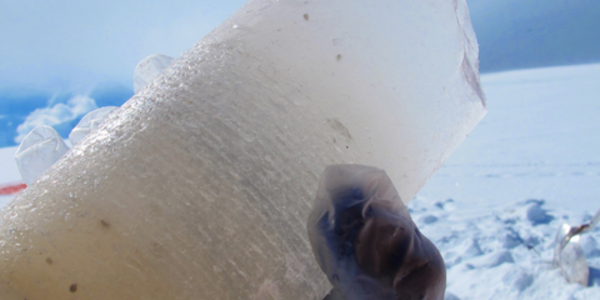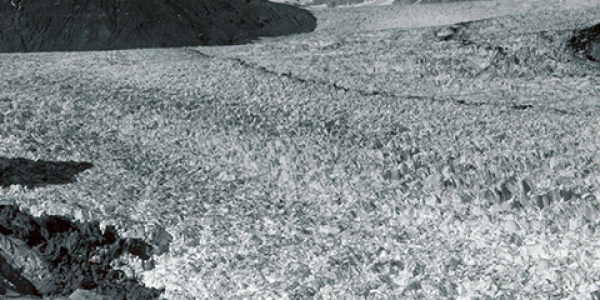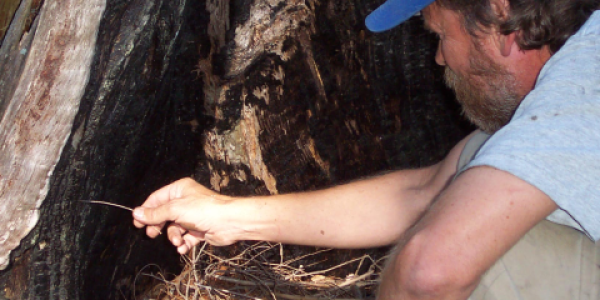Studying the world before thermometers provides a better understanding of future climate concerns

Climate research has revealed dramatic increases in temperatures since the late 19th century, but our analysis is limited by how long temperatures have been consistently sampled around the world, providing data that lasts for only a negligible fraction of the Earth’s lifespan. How can researchers compare modern temperatures to past centuries and millennia?
The answer is paleoclimate research. By using various proxies, scientists can infer climate information from thousands or even millions of years ago. Tree rings and ice cores contain physical or chemical evidence that can be reliably traced to certain time periods. For instance, scientists can observe the width of annual tree rings in temperature-sensitive (as opposed to moisture-sensitive) trees or the relative concentrations of oxygen isotopes in ice cores (at high latitudes, precipitation in colder conditions has a lower O-18/O-16 ratio as compared to warmer conditions).
Paleoclimate data allows us to better understand current trends in the context of centuries of climate variability.
Temperature and Carbon Dioxide Change
When broadly viewing the paleoclimate record, one clear trend emerges: when the concentration of carbon dioxide in the atmosphere increases, temperature increases along with it—and vice versa. These values may rise and fall over 100,000 year periods, but they do so at similar rates. This trend is consistent with the role of greenhouse gases in climate change.
Carbon dioxide is coupled to temperature in other ways. For instance, warmer temperatures release more carbon from soils and permafrost, warmer oceans absorb less carbon from the atmosphere, and warmer periods prevent the fertilization of marine phytoplankton that can take up excess carbon dioxide.
Paleoclimate data also reveals that climate change is about more than temperature. During times with lowest temperatures, snow lines were lower, continents were drier, and tropical monsoons were weaker. While some of these changes may be independent, some could be tied to changing levels of carbon dioxide. Understanding what changes may occur in the future and to what extent remains a topic of vigorous research.
Paleoclimatic Data for the Last 2,000 Years
Since the 1970s, paleoclimatologists have developed methods for reconstructing temperatures over the last 2,000 years based on a broad range of proxy data types. While some differences between these records may be due to their using a variety of statistical methods, they show similar patterns of temperature variability over the last 2,000 years.
These paleoclimate reconstructions reveal three important conclusions:
- Temperatures have increased over the last 50 years at an unprecedented rate.
- Warmer than average temperatures are more widespread across the Northern Hemisphere since the mid-20th century than in any previous time.
- Prior to 1850 CE, there was a millennial-scale cooling trend including a multi-century period with relatively cooler temperatures beginning in the 15th century.
Climate Model Simulations of the Last 1,000 Years
Paleoclimate records indicate that natural climate variations are a result of “forcings,” factors that drive the climate system to change. These forcings include solar and volcanic activity. Some theorize that these forcings are behind global warming, rather than human-caused greenhouse gas emissions. We can test this using another tool: the climate model.
Climate models are computer programs that use physical laws to determine how climate has changed in the past and may change in the future. Models range from simple ones tracking only the most essential processes to complex ones which incorporate additional important interactions between the atmosphere, ocean, sea ice, and land surface. Through modeling studies, researchers have examined the contribution of greenhouse gas concentrations to global warming.
These climate model simulations have revealed that:
- Solar and volcanic activities have been responsible for some variations in Northern Hemisphere temperature over the past 1,000 years.
- Neither solar nor volcanic forcing can explain the dramatic warming of the 20th century. Natural changes in these forcings would actually have resulted in a small cooling since 1960 under a normal emissions pathway.
- Only by adding the human-caused increase in greenhouse gas concentrations are the models able to explain the unprecedented warmth we are experiencing.
Paleoclimate Data Before 2,000 Years Ago
Studying data from well beyond 2,000 years ago, paleoclimatologists have discovered several periods of unusually high warmth. The Mid-Holocene Warm Period, observed about 6,000 years ago, was generally warmer than today during summer in the Northern Hemisphere.
This natural warming was caused by slow changes in the Earth’s orbit, which caused shifts in the amount of solar radiation reaching each latitudinal band of the planet. Changes in the Earth’s orbit also caused warming in the Penultimate Interglacial Period about 125,000 years ago. Based on proxy evidence, the global mean annual surface temperature appeared to be higher than pre-industrial by about 1° to 2°C, but this warming was not uniform across the globe. However, this slowly varying climate forcing mechanism cannot be responsible for warming over the last 100 years.
The Early Eocene Period, about 54 to 48 million years ago, stands out as distinctly warmer than today, particularly at high latitudes. The global surface temperature was 9° to 14°C higher than today, and carbon dioxide levels were very high, between 1,000 to 2,000 parts per million (levels in 2021 were 414.27 parts per million). Scientists think that increased volcanic activity was an important cause of these high levels of carbon dioxide. Model simulations support the hypothesis that carbon dioxide concentrations maintained high temperatures in the early Eocene.





